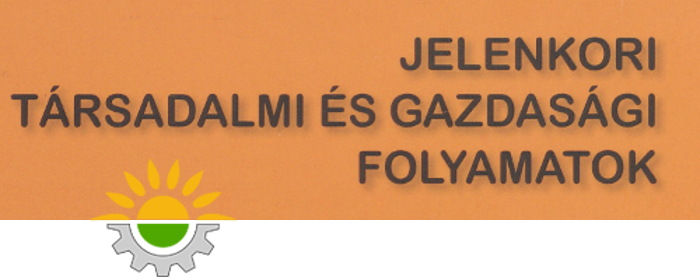A kiterjesztett valóság alkalmazásfejlesztésének jövője: trendek és lehetőségek
Main Article Content
Absztrakt
A kiterjesztett valóság (AR) alkalmazásfejlesztésének jövőjét a feltörekvő trendek és a különböző iparágakban bővülő lehetőségek alakítják. Ebben a tanulmányban az AR technológia kulcsfontosságú fejlődéseit vizsgáljuk, beleértve a mesterséges intelligencia integrációját, a felhőalapú számítástechnikát és az 5G kapcsolódást. Kiemeljük az AR egyre növekvő alkalmazását olyan ágazatokban, mint az egészségügy, az oktatás, a kiskereskedelem és a gyártás, hangsúlyozva annak szerepét a felhasználói élmény javításában és az üzemeltetési hatékonyság növelésében. Továbbá megvitatjuk a hardverkorlátokkal, az adatbiztonsággal és a felhasználói adatvédelemmel kapcsolatos kihívásokat is. A tanulmány áttekinti a jelenlegi fejlesztési keretrendszereket és platformokat, bemutatva az AR eszközök fejlődését és azok hatását a fejlesztők számára való hozzáférhetőségre. Foglalkozunk a webalapú és platformfüggetlen AR megoldások felé történő elmozdulással is, amely rávilágít az egyre növekvő igényre a zökkenőmentes és skálázható alkalmazások iránt. Emellett az innovációs lehetőségeket is azonosítjuk az AR tartalomkészítés, a felhasználói interakció és a vállalati alkalmazások területén. Ezen trendek elemzésével arra a következtetésre jutunk, hogy az AR fejlesztése folyamatosan fejlődni fog, amelyet a számítási teljesítmény, az érzékelőtechnológia és a felhasználói igények fejlődése hajt. Javasoljuk, hogy a kutatók, fejlesztők és vállalatok közötti együttműködés kulcsszerepet játszik a meglévő akadályok leküzdésében, valamint az AR alkalmazások teljes potenciáljának kiaknázásában a jövőben.
Letöltések
Article Details
Hivatkozások
Al-Ansi, A. M., Jaboob, M., Garad, A., Al-Ansi, A. (2023): Analyzing augmented reality (AR) and virtual reality (VR) recent development in education. Social Sciences & Humanities Open, 8 (1): 100532. https://doi.org/10.1016/j.ssaho.2023.100532
AlGerafi, M. A. M., Zhou, Y., Oubibi, M., Wijaya, T. T. (2023): Unlocking the Potential: A Comprehensive Evaluation of Augmented Reality and Virtual Reality in Education. Electronics, 12 (18): 3953. https://doi.org/10.3390/electronics12183953
Arena, F., Collotta, M., Pau, G., Termine, F. (2022: An Overview of Augmented Reality. Computers, 11 (2): 28. https://doi.org/10.3390/computers11020028
Ashibil, A., Víg, P. ., Erdélyi, V. ., Tóth, J., Farkas, I. (2024): Performance Assessments of Direct Contact Serpentine Tube Based Photovoltaic Thermal Module: An Experimental Comparison. Journal of Engineering and Sustainable Development, 28 (4): 473–479. https://doi.org/10.31272/jeasd.28.4.6
Ashtari, N., Bunt, A., McGrenere, J., Nebeling, M., Chilana, P. K. (2020): Creating augmented and virtual reality applications: Current practices, challenges, and opportunities. In: Proceedings of the 2020 CHI conference on human factors in computing systems, 1–13. https://doi.org/10.1145/3313831.337672
Boboc, R. G., Gîrbacia, F., Butilă, E. V. (2020): The Application of Augmented Reality in the Automotive Industry: A Systematic Literature Review. Applied Sciences, 10 (12): 4259. https://doi.org/10.3390/app10124259
Bodhwani, K., Sharma, A. (2023): The Future of Augmented Reality: Emerging Trends and Challenges. Landscape, 4 (2): 1–63. https://doi.org/10.5281/zenodo.11291283
Bondarenko, V., Zhang, J., Nguyen, G. T. Fitzek, F. H. P. (2024): A Universal Method for Performance Assessment of Meta Quest XR Devices. 2024 IEEE Gaming, Entertainment, and Media Conference (GEM). Turin, Italy, 2024, 1-6, https://doi.org/10.1109/GEM61861.2024.10585428
Csík, D., Odry, Á., Perti, R., O., Sárosi, J. Sarcevic, P. (2023): A novel orientation-based FSPL model parameter optimization method using PSO for indoor localization. In: IEEE 21st World Symposium on Applied Machine Intelligence and Informatics SAMI (2023): Proceedings. 201–205.
Csikós, S., Bálint, Á. (2016): DC motor speed control in LabVIEW. Recent Innovations in Mechatronics, 3 (1-2): 1–3. https://www.doi.org/10.17667/riim.2016.1-2/15.
Dargan, S., Bansal, S., Kumar, M., Mittal, A., Kumar, K. (2023): Augmented reality: A comprehensive review. Archives of Computational Methods in Engineering, 30 (2): 1057–1080. https://doi.org/10.1007/s11831-022-09831-7
de Souza Cardoso, L. F., Mariano, F. C. M. Q., Zorzal, E. R. (2020): A survey of industrial augmented reality. Computers & Industrial Engineering, 139: 106159. https://doi.org/10.1016/j.cie.2019.106159
Fraga-Lamas, P., Fernandez-Carames, T. M., Blanco-Novoa, O., Vilar-Montesinos, M. A. (2018): A review on industrial augmented reality systems for the industry 4.0 shipyard. Ieee Access, 6: 13358–13375. https://doi.org/10.1109/ACCESS.2018.2808326
Fürstner, I., Gogolak, L. (2015): Presentation of the Developed Mechatronic Devices for Exhibition Purposes. International Journal of Electrical and Computer Engineering Systems, 6 (1): 23–28.
Garzón, J. (2021): An Overview of Twenty-Five Years of Augmented Reality in Education. Multimodal Technologies and Interaction, 5 (7): 37. https://doi.org/10.3390/mti5070037
Gogolák, L., Fürstner, I. (2020): Wireless sensor network aided assembly line monitoring according to expectations of industry 4.0. Applied Sciences, 11 (1): 25. https://www.doi.org/10.3390/app11010025
Kamińska, D., Zwoliński, G., Laska-Leśniewicz, A., Raposo, R., Vairinhos, M., Pereira, E., Urem, F., Ljubić Hinić, M., Haamer, R. E., Anbarjafari, G. (2023): Augmented Reality: Current and New Trends in Education. Electronics, 12 (16): 3531. https://doi.org/10.3390/electronics12163531
Kóczi D., Sárosi J. (2022): Kollaboratív robotok ipari alkalmazása – Áttekintés. Jelenkori Társadalmi és Gazdasági Folyamatok, 17 (1-2): 145–152. https://www.doi.org/10.14232/jtgf.2022.1-2.145-152
Kocsispéter M. (2024): Valós idejű gyártáskövetés kiterjesztett valósággal. Diplomadolgozat, Faculty. Szegedi Tudományegyetem Mérnöki Kar. Szeged.
Lukić, T., Lukity, A., Gogolák, L. (2011): Binary Tomography Reconstruction Method with Perimeter Preserving Regularization, Proceedings of 8th Conference of the Hungarian Association for Image Processing and Pattern Recognition (KEPAF), Szeged, Hungary. 83–91.
Mendoza-Ramírez, C. E., Tudon-Martinez, J. C., Félix-Herrán, L. C., Lozoya-Santos, J. d. J., Vargas-Martínez, A. (2023): Augmented Reality: Survey. Applied Sciences, 13 (18): 10491. https://doi.org/10.3390/app131810491
Mészáros, A., Sárosi, J. (2022): Soft Robotics: State of Art and Outlook. Analecta Technica Szegedinensia, 16 (1): 8–13. https://doi.org/10.14232/analecta.2022.1.8-13
Odry, A., Kecskes, I., Pesti, R., Cík, D., Stefanoni, M., Sarosi, J., Sarcevic, P. (2025): NN-augmented EKF for Robust Orientation Estimation Based on MARG Sensors. International Journal of Control, Automation Systems, 23: 920–934. https://doi.org/10.1007/s12555-024-0221-9
Pletl, S., Gál, P., Kukolj, D., Gogolák, L. (2010): Optimizing coverage in mobile wireless sensor networks, IEEE 8th International Symposium on Intelligent Systems and Informatics. 371–376. https://doi.org/10.1109/SISY.2010.5647399
Quandt, M., Knoke, B., Gorldt, C., Freitag, M., Thoben, K. D. (2018): General requirements for industrial augmented reality applications. Procedia Cirp, 72: 1130–1135. https://doi.org/10.1016/j.procir.2018.03.061
Simion, A., Iftene, A., Gîfu, D. (2021): An Augmented Reality Piano Learning Tool. In: Proceedings of RoCHI 2021. 134–141. https://doi.org/10.37789/rochi.2021.1.1.21
Simon, J. (2024): Augmented Reality Based Industrial Digitalization and Logistics. Analecta Technica Szegedinensia, 18 (4): 1–8. https://doi.org/10.14232/analecta.2024.4.1-8
Soltani, P., Morice, A. H. (2020): Augmented reality tools for sports education and training. Computers & Education, 155: 103923. https://doi.org/10.1016/j.compedu.2020.103923
Viglialoro, R. M., Condino, S., Turini, G., Carbone, M., Ferrari, V., Gesi, M. (2021): Augmented Reality, Mixed Reality, and Hybrid Approach in Healthcare Simulation: A Systematic Review. Applied Sciences, 11 (5): 2338. https://doi.org/10.3390/app11052338
